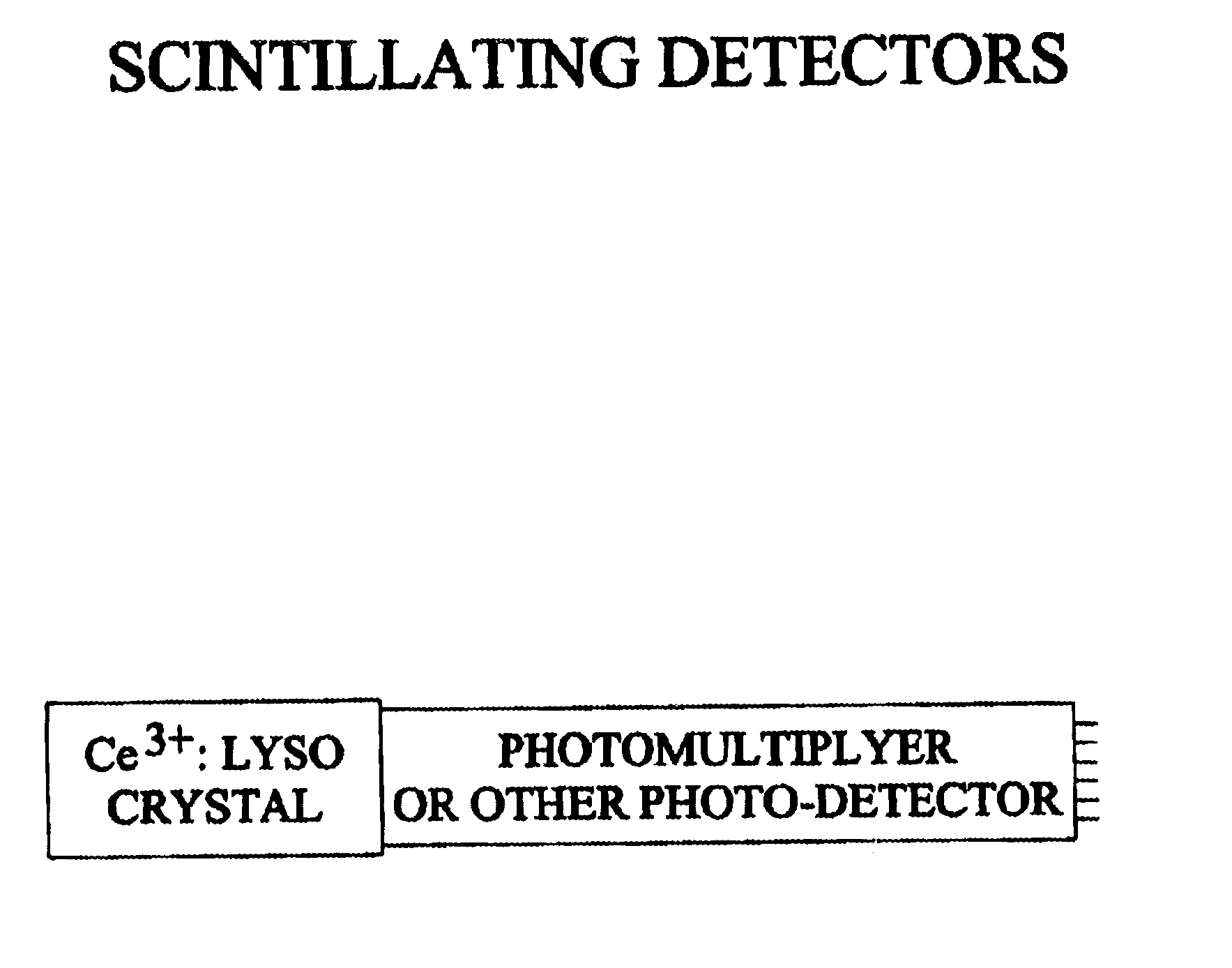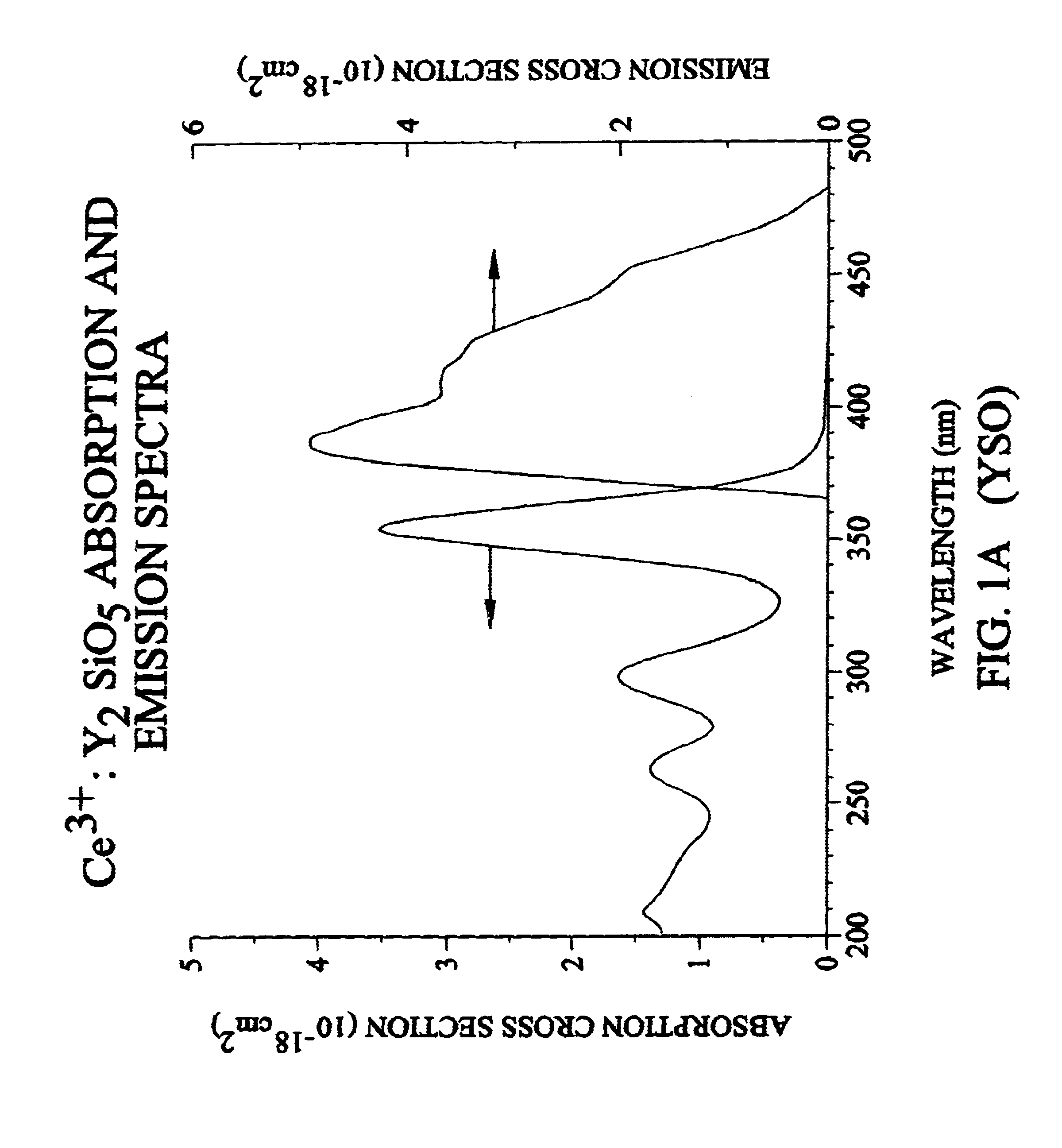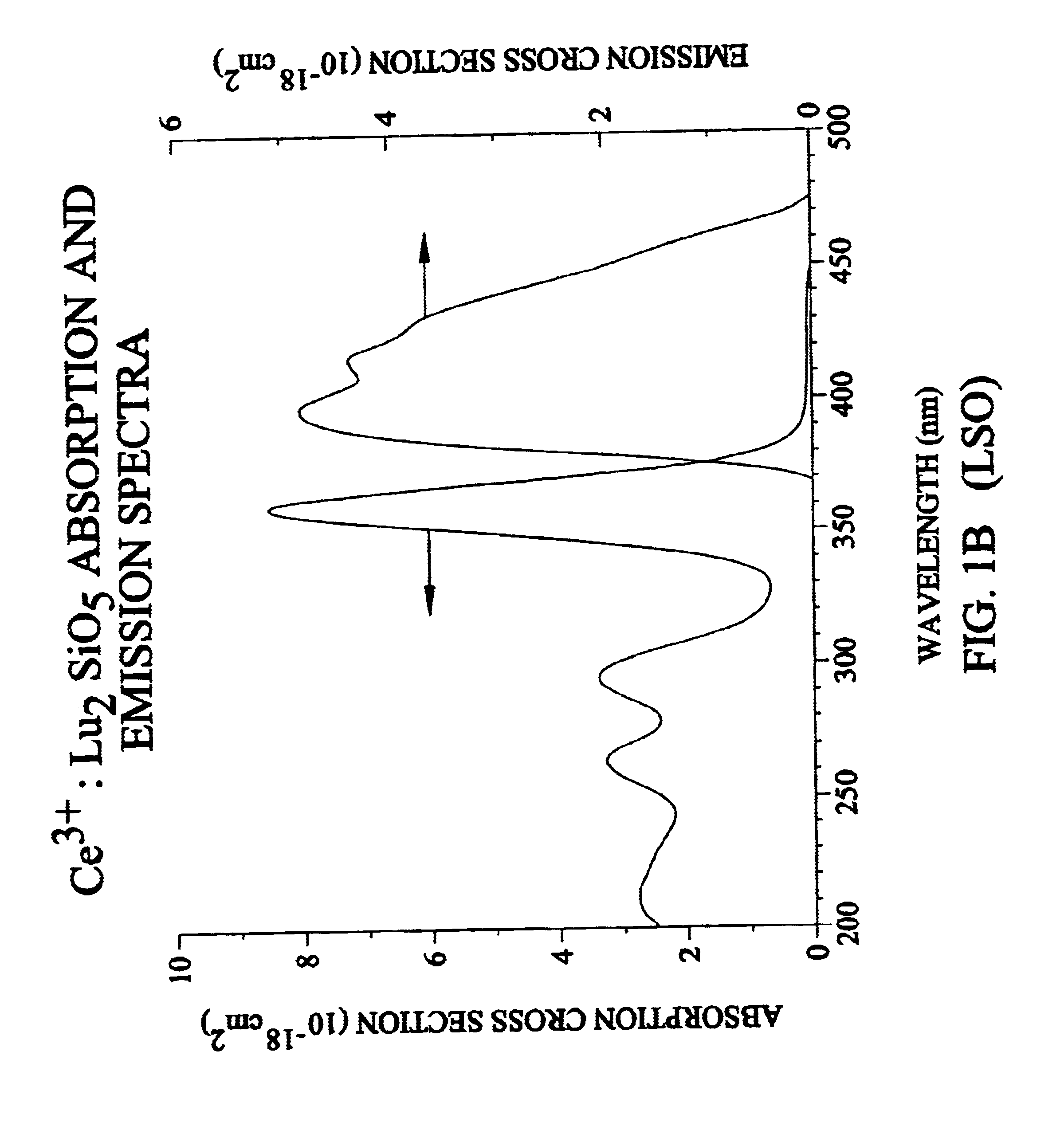Lutetium yttrium orthosilicate single crystal scintillator detector
a technology scintillator, which is applied in the direction of radiation intensity measurement, instruments, x/gamma/cosmic radiation measurement, etc., can solve the problems of not being as sensitive or quantitative, not being able to solve the problem of large equipment volume, not being able to solve the problem of reducing the detection efficiency of lutetium yttrium orthosilicate,
- Summary
- Abstract
- Description
- Claims
- Application Information
AI Technical Summary
Benefits of technology
Problems solved by technology
Method used
Image
Examples
Embodiment Construction
For illustrative purpose, a representative embodiment of the invention is described hereinafter in the context for the detection of high energy gamma rays. It will be understood that the LYSO single crystal scintillator of the invention is not limited to the detection of gamma ray radiation but it has the general application for the detection of other types of radiation such as x-rays, cosmic and other high energy particle rays.
In the background review, it is mentioned that Ce doped LSO has the best scintillating properties among all the known materials. But is still has a few serious problems to over come; namely, the isotope problem and the defect (deep trap) problem. In addition to these physical issues, LSO crystals also face two tough economic issues. First is the high melting temperature for growth. The melting point of LSO is estimated around 2200.degree. C. It is among the highest melting temperature crystals produced commercially. Special high temperature ceramics were used...
PUM
 Login to View More
Login to View More Abstract
Description
Claims
Application Information
 Login to View More
Login to View More - R&D
- Intellectual Property
- Life Sciences
- Materials
- Tech Scout
- Unparalleled Data Quality
- Higher Quality Content
- 60% Fewer Hallucinations
Browse by: Latest US Patents, China's latest patents, Technical Efficacy Thesaurus, Application Domain, Technology Topic, Popular Technical Reports.
© 2025 PatSnap. All rights reserved.Legal|Privacy policy|Modern Slavery Act Transparency Statement|Sitemap|About US| Contact US: help@patsnap.com



